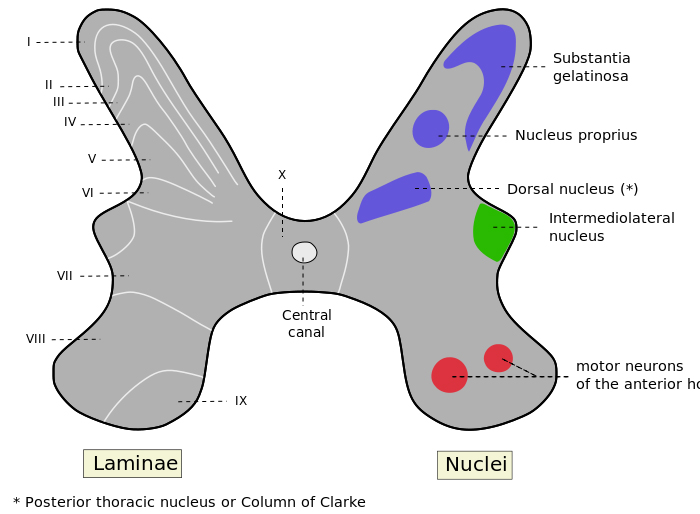A neuroanatomist called Rexed looked at the structure of the grey matter of the spinal cord and divided it into columns of cells that were similar to each other in different segments.
His observations were based on the shape and size of the neurones, and he divided the grey matter into 10 (Roman X) layers and 6 of these are in the dorsal horn, numbered I to VI .
The classification has been useful in that the different lamina have neurones with different functions.
Neurones involved in Motor or Autonomic Control
In the ventral horn, lamina VIII and IX contain longitudinal columns of motoneurones. Each column occupies its own position in the ventral horn and extends over several segments of spinal cord.
Extensor motoneurones are arranged in columns nearer the midline of the ventral horn, and flexor columns are situated laterally.
| 
In segments T1 to L2 and the first 4 sacral segments, the grey matter has an intermedio-lateral column of cells which give rise to autonomic pre-ganglionic neurones .
|